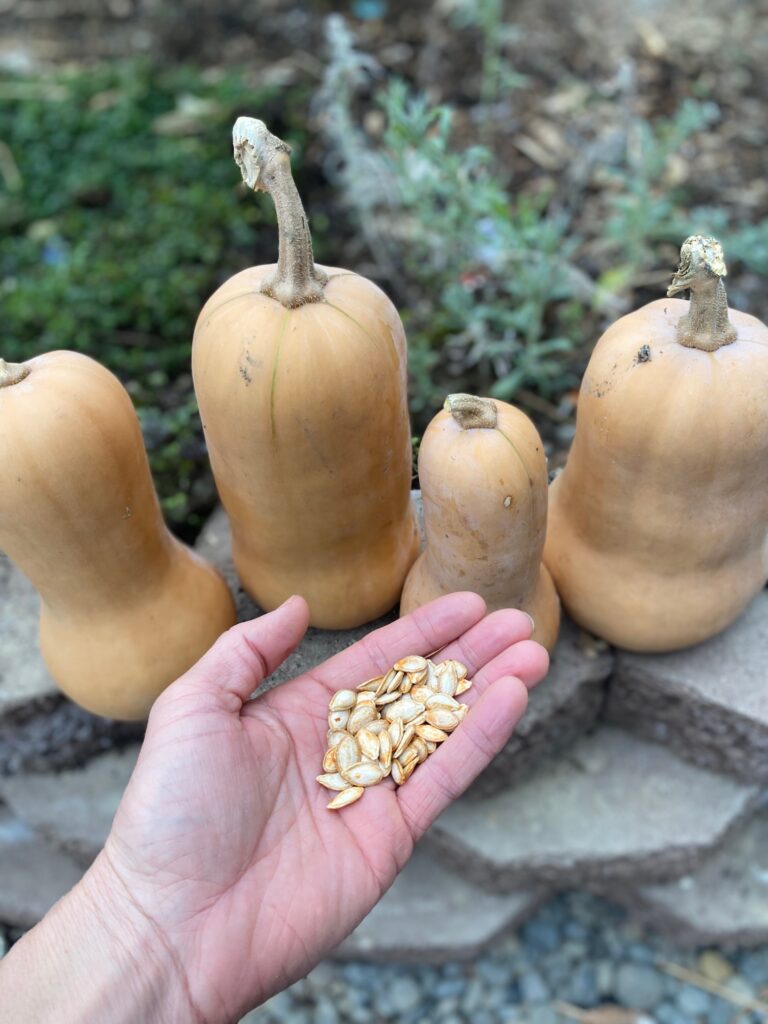Starting to Save Seeds Intentionally
How the Seed Producers Course, offered by a collaboration of Cornell Cooperative Extension educators, experienced seed producers, and regional seed companies, helped to level up one farmer’s seed-saving skills.

Erica committed to saving seeds on her farm this year after taking a Seed Producers Course. (Erica Frenay / Cornell Small Farms)
At the end of last year, like every veggie grower I know, my mailbox filled with seed catalogs. And I, like every veggie grower I know, delighted in perusing the bright colors and optimistic descriptions during long dark wintry evenings. Dreaming of the Summer abundance is a time-tested Winter survival technique employed by thousands of gardeners and farmers in living in cold climates! If I gave a thought to where all those seeds came from, it was only in passing, as I was much more interested in which varieties I would plant this year. Not once did it occur to me that I could be one of the people supplying those seeds!
As long as I’ve grown flowers, herbs, and vegetables, I’ve saved seed. But not skillfully, with intent to maintain the purity of a variety, and not for any seed requiring in-depth knowledge or extra work to harvest. My haphazard strategy has been more like: “Whoops, my lettuce bolted! Guess I’ll save that seed.” Or, “Oh, I accidentally missed harvesting some peas. Well, if I wait ‘til the pods dry I can save the seed.”
But then I heard about a Seed Producers Course, offered by a collaboration of Cornell Cooperative Extension educators, experienced seed producers, and regional seed companies. I excitedly enrolled, seeking to level up my seed-saving skills. Not only has the course provided training in the many details of seed production, but organizers are matching every participant with mentors for their chosen crops, and even securing buyers for anyone wishing to sell their seed crop this Fall.
And because seed is not simply an economic commodity but a carrier of cultural traditions, food ways, and stories, course organizers have been very intentional in including perspectives from seed keepers from the Onondaga Nation Farm, Akwesasne Intertribal Agricultural Council, and Sistah Seeds to help budding seed-savers understand that there is so much more to growing seeds than understanding isolation distances, disease management, and yield per bed-foot.
I’ve committed to saving 3 different types of cucurbit seeds this year, mostly because I’ve never tried to save wet-seeded crops before (i.e. those whose seeds are harvested from within a wet fruit, as opposed to being ready for harvest once dried). I have farmed at Shelterbelt for 13 years, but raising lambs, beef, laying hens, and fruit trees does little to provide a foundation of knowledge for an aspiring seed-saver! One of the things I love most about farming is how impossible it is to get bored, because there is always more to know. So here I go again wading into almost completely foreign territory, happy to have such knowledgeable mentors leading me along the way.
I sometimes hear the phrase “gone to seed” used as a derogatory way to describe a person or place that is past its prime. I much prefer the way I’ve heard indigenous seed keepers talk about seed. Angela Ferguson, manager of the Onondaga Nation Farm, says that her people treat seed as their children, giving them the same level of care, love and attention you’d extend to a small human. It’s time we reclaim the expression “gone to seed” as a positive one: of life reproducing itself, of the incredible abundance of Earth. I look forward to when my gardens have gone to seed this year!

